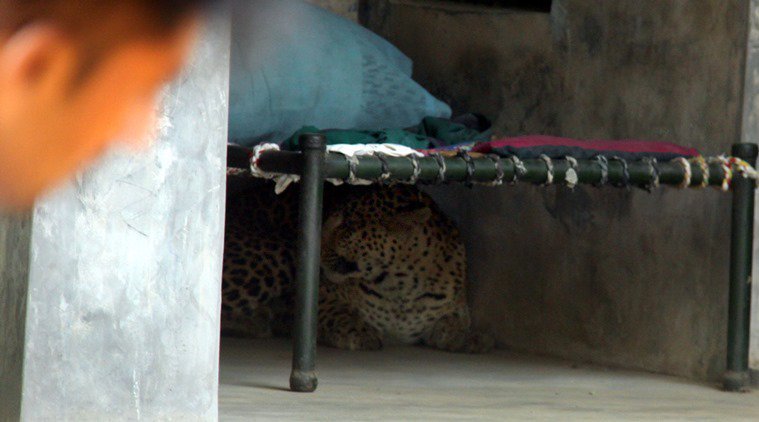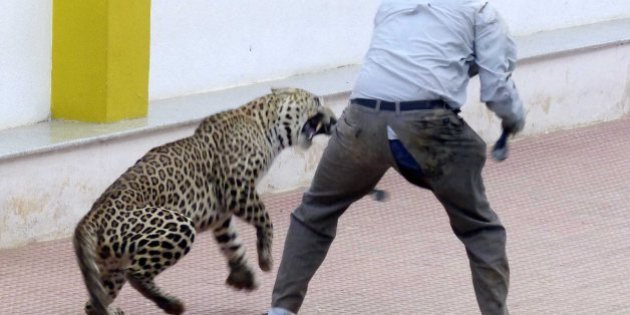Three months, six deaths. The villagers in Rajasthan’s Sariska district have been living in constant fear after two ‘rehabilitated’ leopards were released into the wild by Jaipur Zoo recently.
On Saturday, forest officials declared that one of the three leopards suspected of the killings has been captured. But for the residents of the the nearly 40-strong villages surrounding the Sariska Tiger Reserve, the issue is far from over, Times of India reported.

A brief timeline of events:
Two leopards were captured and sent to Jaipur Zoo for ‘rehabilitation’ in October and November consecutively after the killings of two villagers.
The leopards were surgically castrated in the zoo to ‘check aggression’ and then kept in captivity for almost three months to allow for their recovery.
By early February, both tigers were released in the Kalighati region of Rajasthan, away from their places of capture after they were deemed fit for release.
Since their rehabilitation, the duo seem to have joined a third leopard. In their investigations, forest officials have discovered three distinct sets of footprints, leading them to believe that a prowl of three killed the villagers.
Baiting the leopards

A massive, week-long leopard hunt was mounted by local authorities in Rajasthan to find the leopards. A total of 120 policemen were part of the search team.
The officials placed cages with goat carcasses inside to bait the animals in. Five such cages have been placed at strategic locations and 10 more of such carcasses have been hung at various locations with guard on the ready to tranquilize the leopards in case any come.
Search is still on for the remaining two leopards.
What went wrong?
Experts have criticised the ‘rehabilitation’ of the leopards, who have been termed ‘man-eaters’, claiming that the forced captivity and consequent release of wild animals, who might find it difficult to adapt to human behaviors upon release.
Officials have also been criticised for releasing the leopards in Kalighati, away from their places of capture, which may have caused the animals to act irrationally. Leopard are highly territorial creatures, with strong homing instincts. The loss of surroundings may cause disorientation and lead the animal to act out aggressively.
According to an Indian Express report, the forest minister for state, Gajendra Khimsar, has also criticised forest authorities for not fitting the ‘rehabilitated’ animals with sensory chips that can be used to track the animals and supervise its activities upon release.

It was Khimsar who sought the release of the big cats into the wild within three months, since he is against the locking up of wild animals in zoos. After the reported deaths, Khimsar, however, was quick to shirk responsibility, claiming he had only signed off on the order and not been the sole deciding authority on it since he was not a forest official.
The big cat problem
Leopards are an endangered species (under Section 1 of Prevention Of Cruelty to Wildlife Act, 1972). From 496 leopards in 2009, the number of leopards in Rajasthan has fallen to 434 in 2015.
Numerous incidents of leopards straying into human territories have been reported in the past few years such as in Gurugram, Morni Hills district in Punjab and several cities in Gujarat among others.

According to conservation experts, increased human encroachment is a reason why such incidents continue to happen, and that better conservation measures need to be taken to protect forested and protected areas. Hindustan Times reported.
Conservationists at Sariska Tiger Reserve have suggested the setting up of special centres for rescued or captured leopards. This labs will instantly confirm whether a leopards is a man eater or not, before being sent to zoos.
As of now, Sariska is under shutdown, with villagers refusing to leave their houses for fear of being attacked.
Feature Image Source: PTI

















